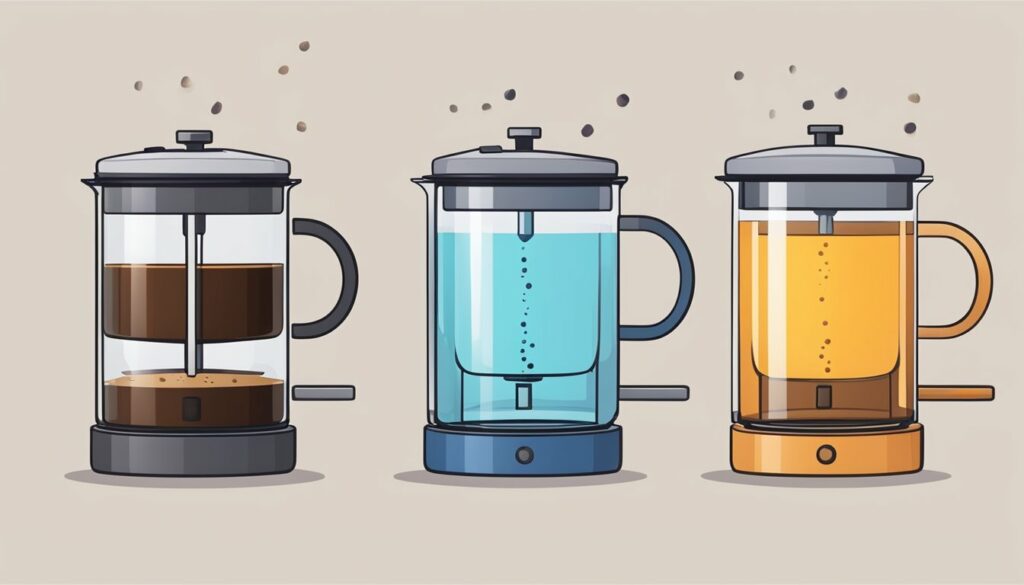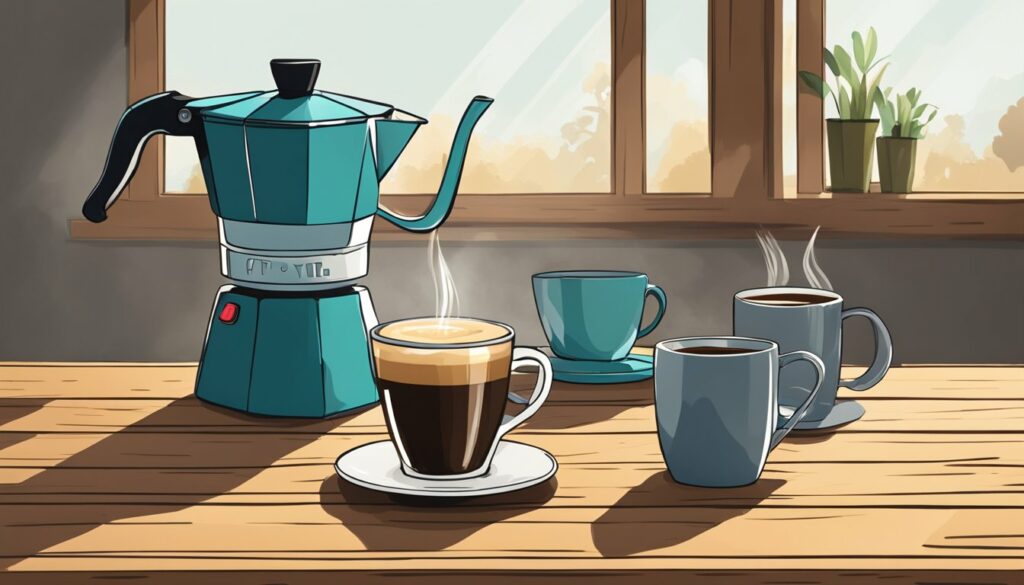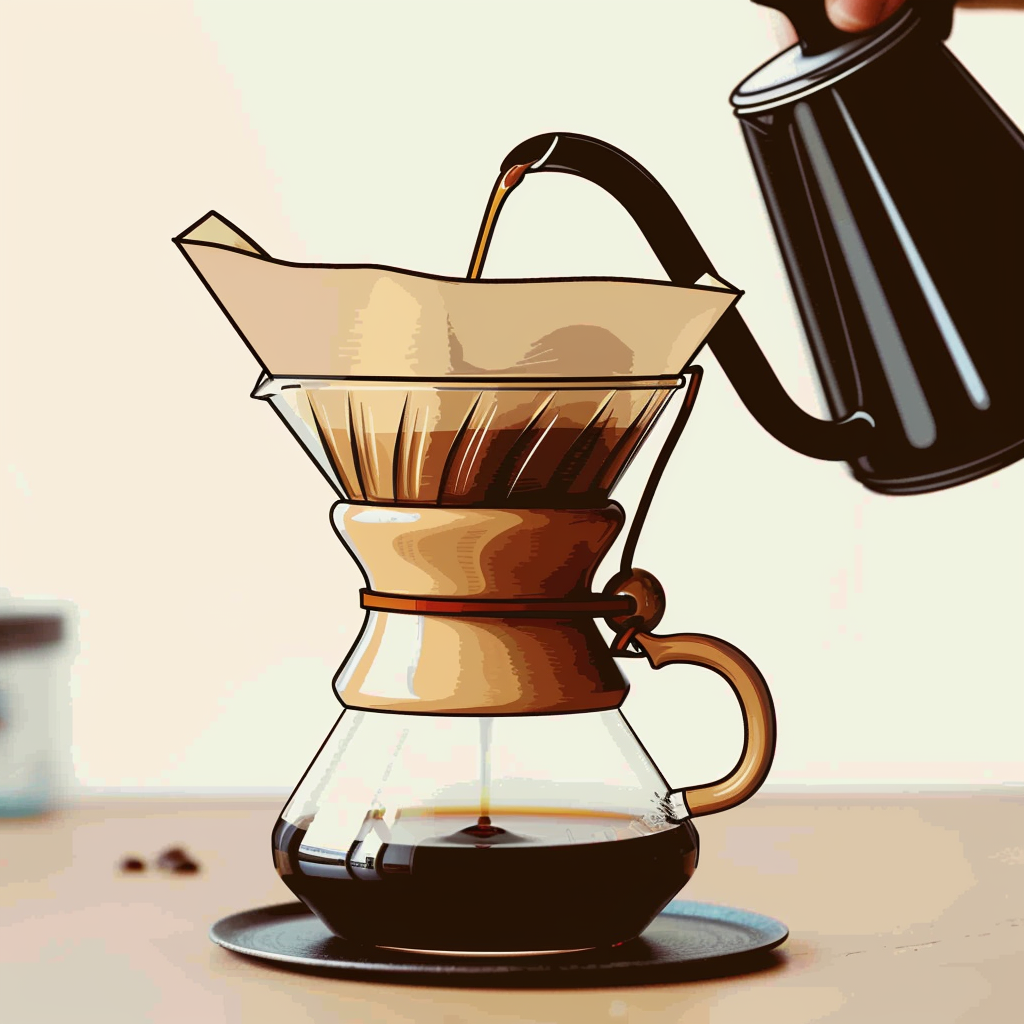
Pour-over coffee has gained popularity among coffee enthusiasts, as it offers a superior level of control over the brewing process, allowing you to create the perfect cup right in your own home. This method starts with fresh, hot water poured meticulously over coffee grounds, resulting in brewed coffee that highlights the natural flavors of the beans while providing a clean, balanced taste.
In order to make delicious pour-over coffee at home, you have to understand a few key factors, such as water temperature, coffee-to-water ratio, and grind size.
Basics of Pour-Over Coffee
Choosing Your Equipment
To make the perfect pour-over coffee, you need the right equipment. Here’s what you’ll need:
- A pour-over cone (such as Hario V60 or Chemex)
- A gooseneck kettle for precise pouring
- Paper filters to fit your pour-over cone
- A coffee grinder (preferably a burr grinder)
- A kitchen scale for accurate measurements
- An electric kettle with temperature control
- A thermometer to ensure proper brewing temperature
- A carafe or mug to collect the brewed coffee
Selecting and Preparing Your Coffee
When making pour-over coffee, the quality of your beans and grind makes a significant difference in the flavor. Keep these tips in mind:
- Choose freshly roasted coffee beans with a roast that you prefer (light, medium, or dark).
- Use a burr grinder for a consistent grind size. Pour-over coffee works best with a medium-coarse grind.
- Measure your ground coffee and filtered water using a kitchen scale for precise ratios. Aim for a ratio of about 1:16, coffee to water.
- Pre-wet the paper filter in the pour-over cone with hot water to rinse out any paper taste; discard the rinse water afterward.
Understanding the Brewing Process
Follow these steps to brew your perfect pour-over coffee:
- Heat the water to a temperature between 195-205°F using your electric kettle or a thermometer.
- Add the ground coffee to the pre-wet filter, creating a flat bed of grounds for even extraction.
- Bloom the coffee by pouring hot water in a spiral motion over the grounds, just enough to saturate them. Let it sit for 30 seconds to let the coffee “bloom” and release carbon dioxide.
- Continue pouring the water in a spiral pattern from the center, slowly and evenly. Make sure not to pour directly on the filter’s edges.
- The entire brewing process should take about 2.5 to 3 minutes for a single cup. Use a timer to monitor your progress.
- Once the brewing is complete, remove the pour-over cone and enjoy your coffee.
Enhancing Your Pour-Over Experience

Exploring Different Tastes and Textures
To truly elevate your pour-over coffee experience, it’s essential to experiment with different brewing techniques and equipment. By simply adjusting your grind size, changing the type of filter, or using a different ratio of coffee to water, you can achieve a wide range of flavors.
One key aspect of pour-over coffee is the grind size. A finer grind increases the surface area for water extraction, leading to a more intense and flavorful brew. Alternatively, a coarser grind will allow for quicker water flow through the grounds, yielding a lighter and subtler taste. It’s crucial to have a high-quality burr grinder, as this provides the most consistent grind size.
When it comes to filters, paper filters are the most common option for pour-over brewers like the Hario V60 and Chemex. They generally produce a cleaner cup of coffee with less sediment. Switching to a metal filter is an option if you prefer a more full-bodied brew, which allows for more coffee oils to pass through.
Keep in mind your ratio of coffee to water during the brewing process. A standard ratio of around 1:16 (one part coffee to sixteen parts water) is a good starting point. By adjusting this ratio, you can easily find the balance of strength and flavor that suits your palate.
The bloom time is another step in enhancing your pour-over coffee. Wetting the coffee grounds with a small amount of hot water (around twice the weight of the coffee grounds) before the full pour allows trapped CO2 gas to escape. This step, when done correctly, can bring out even more nuanced flavors in your coffee. A typical bloom time is 30 seconds.
Having the right equipment, such as a gooseneck kettle, is also crucial for precise pouring and temperature control. Water temperature should be around 195-205°F (90-96°C) for optimal extraction. An electric kettle with a built-in thermometer can be helpful for maintaining the desired temperature.
Finally, the way you pour water over the coffee grounds matters. Begin pouring water at the center of the grounds in a circular motion, slowly working your way outwards. Make sure not to touch the rim of the grounds, keeping as much of the water as possible within the brewing area. This controlled spiral motion helps evenly extract the flavors throughout the brewing process.
Don’t be afraid to experiment with different coffee beans, roasting profiles, grind sizes, and brewing techniques. No two cups of pour-over coffee should ever taste the same. Enjoy this opportunity to fine-tune your coffee-making skills and savor the intricate flavors pour-over coffee has to offer.
We want to remind our readers that the articles or content found on afullmug.com do not constitute nor replace professional health or dietary advice. The information provided on our website is purely educational and informational, and should not be used as a substitute for advice from a licensed dietician, medical practitioner, or nutritionist.


